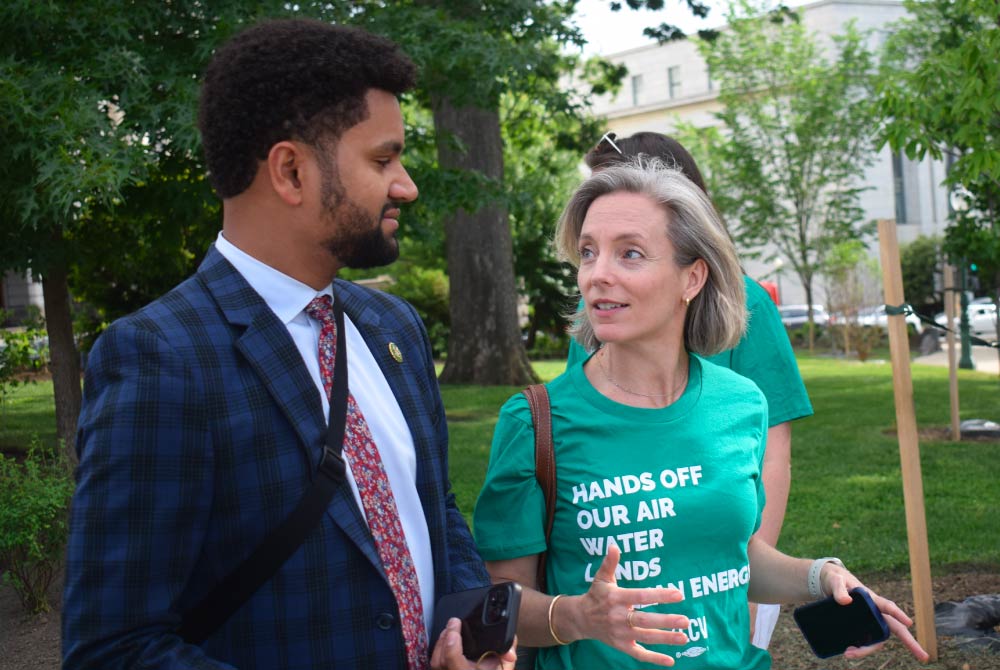
Top 5 Stories Worth Reading – June 2025
Jun 30, 2025
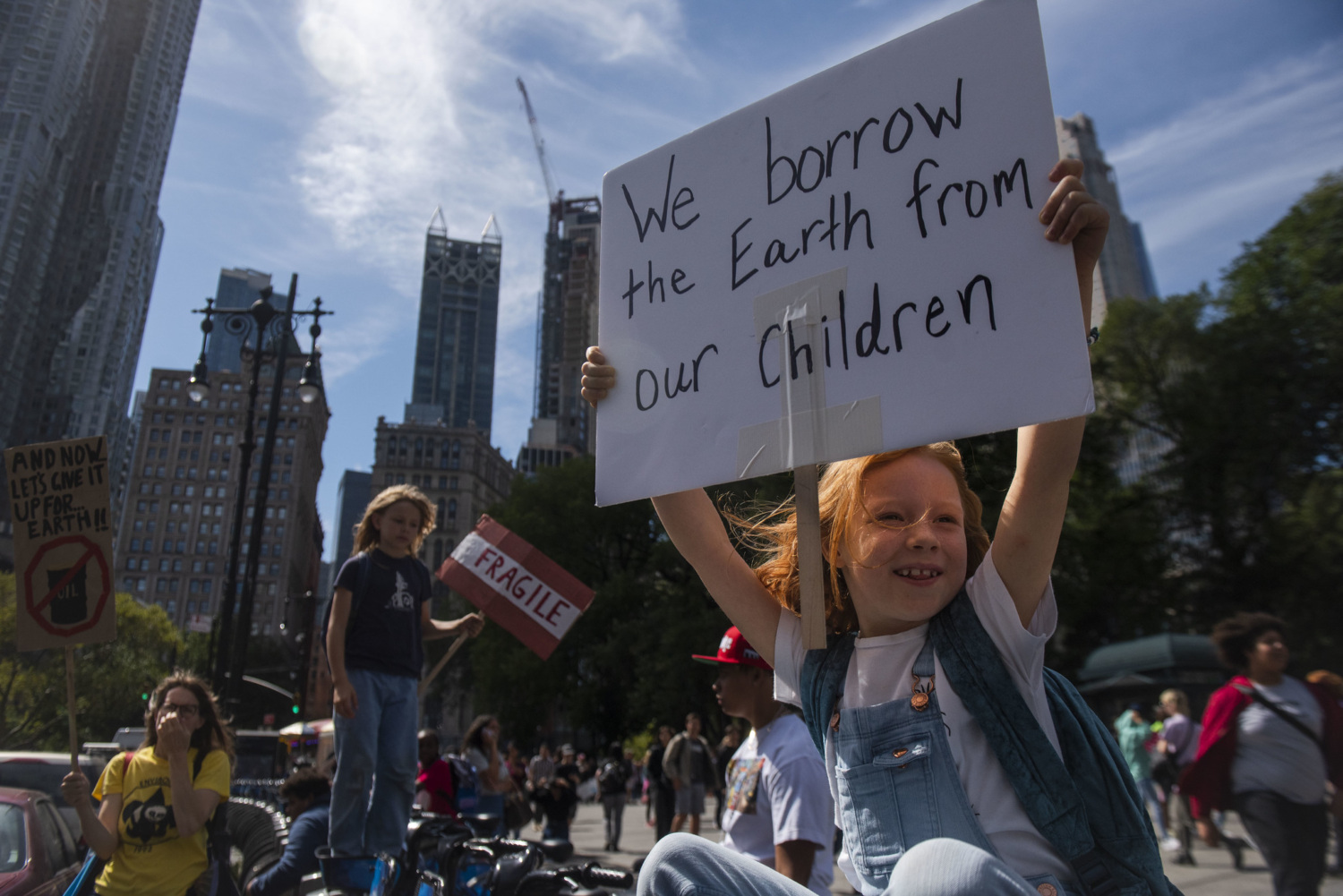 Photo by Amanda Voisard, UN Women
Photo by Amanda Voisard, UN Women
The Inflation Reduction Act, part of President Biden’s Affordable Clean Energy Plan, was signed into law one year ago today and is the largest piece of climate legislation ever passed – not just in the U.S. but in the world.
Already, it is helping to cut carbon emissions, create good jobs, and advance environmental justice across the country. The bill is also saving individuals and small businesses money on their energy bills through tax incentives and lower upfront costs for adopting clean energy technologies.
In the short term, the bill will save individuals:
⚡ Up to $8,000 for updating electric appliances like heat pumps.
⛈️ Up to $1,200 on home weatherization projects.
🚗 Up to $7,500 in tax credits for purchasing a new electric vehicle manufactured in the United States, and up to $4,000 for a used electric vehicle.
💡 Up to $4,000 for energy-efficient home upgrades.
The bill also offers:
☀️ A 30% uncapped tax credit for rooftop solar, battery storage, and other residential clean energy installations.
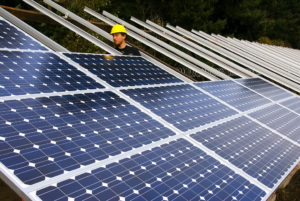
These benefits aren’t just numbers on paper. Here are just a few examples from people who’ve already benefited from provisions under President Biden’s plan. Don’t see your state? Check out Invest.gov to learn state by state about how the plan is helping us all.
The immediate benefits of the affordable clean energy plan are impressive and are already improving the quality of life for individuals and communities in every state. The legislation’s long term benefits will be an even bigger win for the U.S. — and for the world. So far, the bill has created over 170,000 new clean energy jobs in 44 states and has leveraged investments of over $278 billion in 272 new clean energy projects nationwide. These projects are putting people to work and reducing carbon emissions across the country. In the long run, the Biden Administration’s plan to reduce carbon emissions will help:
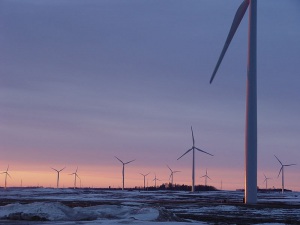
The goal of the Biden administration’s affordable clean energy plan is to lower carbon emissions by transitioning away from fossil fuels across major polluting industries like transportation and energy. In its first year, the legislation has made significant progress on this goal.
🚘 Climate-friendly electric vehicles now make up approximately 14% of all cars sold in the U.S. (up for 4% in 2020), helping reduce emissions from the transportation sector.
⚡ An estimated 80% of new energy capacity in 2023 will be from clean, renewable sources, with only 16% of new capacity coming from fossil fuel plants. Additionally, renewable sources currently provide 21.5% of total energy in the U.S. (and growing), a much higher number than we have ever seen in the past.
Lowering carbon emissions is critical to mitigating the effects of climate change and ensuring that we don’t push the planet over so-called climate “tipping points”: thresholds that, if crossed, could lead to a domino effect of increasingly catastrophic and irreversible impacts on the climate and our environment.
As the country sees more of the real-life impacts of climate change, tipping points have garnered more attention in the media. However, the severity of the impact of reaching tipping points has been front of mind for climate scientists for decades.
Think of a line of dominoes – once the first domino falls, there isn’t much you can do to stop it from knocking down the next domino, and the next one after that. That’s what happens if we pass climate tipping points – our climate would become a series of falling dominoes that would cause ever-worsening disasters and make it much harder or even impossible to stop more damage. For example, when too much ice at the poles melts, the loss of reflective and cooling ice cover will itself contribute to global temperature rise, regardless of whether additional emissions are released into the atmosphere, and the chances of regaining polar ice coverage in the short term to reverse that warming trend becomes very unlikely.

If we surpass these thresholds, our lives will look very different and mitigation efforts will become much more difficult as climate systems become progressively more chaotic and dangerous.
One of the most widely discussed tipping points is a sustained global temperature increase of 1.5 degrees Celsius. Scientists believe that global temperature increase would have significant and disastrous impacts on our day-to-day lives, including higher instances of extreme weather as we’ve seen this summer across the continental U.S., and just this week in the horrifying, deadly fires in Hawai’i.
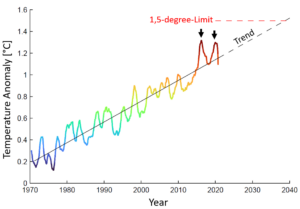
We haven’t reached a sustained global temperature increase of 1.5C – but we’re close. And every tenth of a degree makes a difference. The EU’s Copernicus Climate Change Service estimates that July 2023 reached a global average of 1.5C of warming. But it’s not about one month of hot weather – we don’t pass the tipping point until global temperatures remain over 1.5C of warming for a sustained period.
According to current estimates, the planet could surpass the tipping point in the next decade. So there’s time to correct the course we’re on – but not much. And 1.5C isn’t the only tipping point we need to be cautious of (last year the Guardian outlined others scientists are watching carefully).
Vice President Kamala Harris
It’s on all of us to fight for the transformational change we need to keep from crossing these tipping points. Encouraging the Biden administration to set strong limits on methane emissions from the oil and gas industry, carbon and toxic air pollution from power plants, and tailpipe emissions from trucks and cars is one critical way to build on the success of the affordable clean energy plan and further slash pollution. And if we do pass the threshold, we need to hold the fossil fuel industry accountable and engage everyone to make sure our planet doesn’t get any warmer.
Our individual actions matter, but the climate crisis is bigger than any single one of us. This means that to protect our planet, we all need to get involved in building the political power we collectively hold. It’s easy to listen to the climate doomers’ rhetoric and think it’s already too late, that there is nothing we can do. But that couldn’t be further from the truth. President Biden’s Affordable Clean Energy Plan, including the Inflation Reduction Act, is an example of how we can pass the transformative climate legislation we need. We must protect this historic legislation from the MAGA Republicans in Congress that are repeatedly attempting to gut it to appease their Big Oil donors.
And finally, one of the best things you can do to celebrate the passage of this transformative climate legislation is to promote and tap into the benefits it offers! The Affordable Clean Energy Plan’s tax incentives make improving the efficiency of your home, business, or swapping out your car for an electric vehicle more affordable. Check out the IRA Savings Calculator to figure out what benefits you qualify for and visit our Online Action center to stay up to date with breaking climate actions you can take.